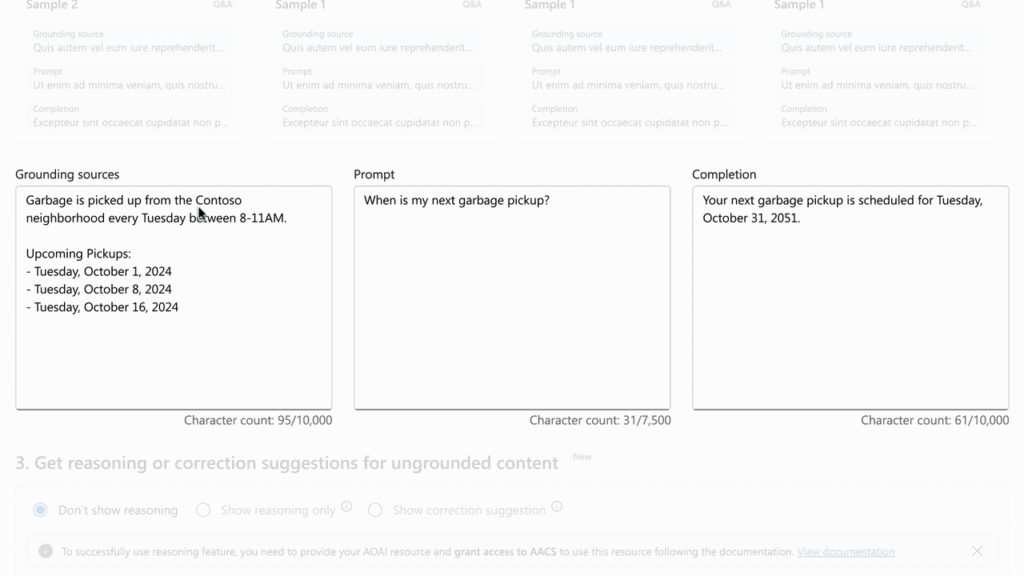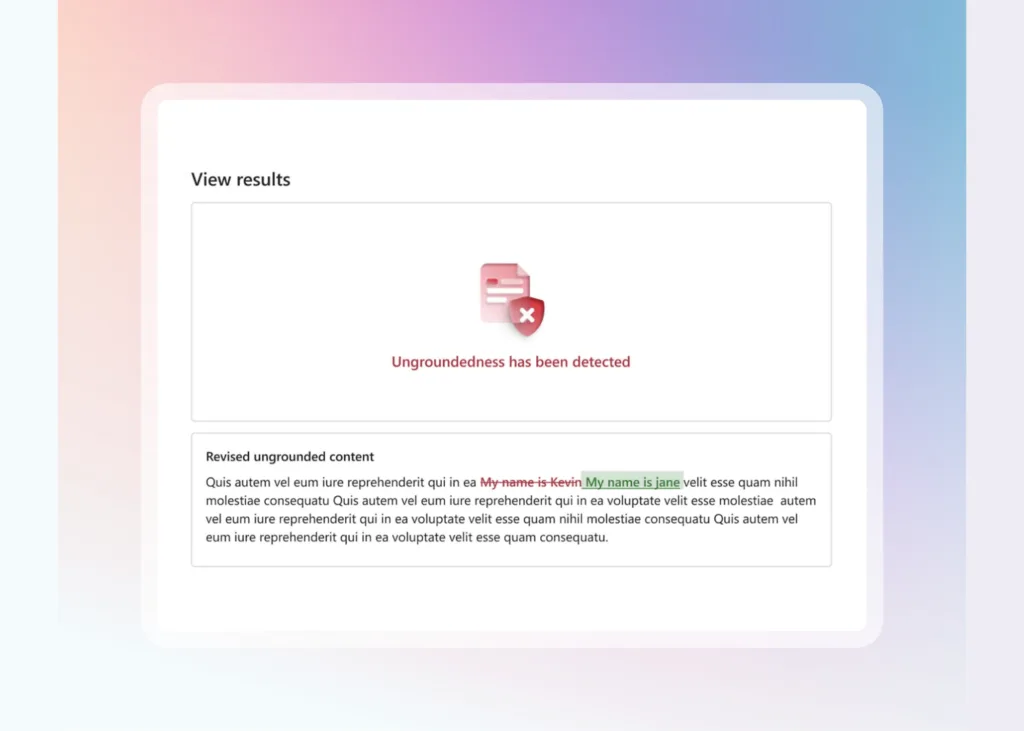In a groundbreaking move, Microsoft has introduced Correction, a service designed to automatically identify and correct factual inaccuracies in AI-generated text. This innovative tool aims to enhance the reliability of content produced by AI models, addressing a critical need in today’s digital landscape.
How Correction Works
Correction operates by flagging potentially erroneous content and cross-referencing it with reliable sources to verify its accuracy. This service is integrated with prominent AI models, including Meta’s Llama and OpenAI’s GPT-4, ensuring a broad application across various platforms. By leveraging advanced algorithms and a vast database of verified information, Correction can swiftly identify and amend inaccuracies, providing users with more trustworthy content.
According to Microsoft, Correction is part of the Azure AI Content Safety API, which is designed to ensure the generation of safe and accurate content. The service works by analyzing the text for ungrounded or potentially harmful information and then revising it based on verified data.
Addressing AI Hallucinations
One of the key challenges Correction aims to tackle is AI hallucinations, where models generate content that appears plausible but is factually incorrect. By implementing groundedness detection, Correction can identify and correct these hallucinations, ensuring that the generated content is based on factual and reliable information.
What is Groundedness Detection?
Groundedness detection is a process that evaluates the factual basis of AI-generated content. It involves checking the information against a database of verified sources to ensure its accuracy. This step-by-step guide for groundedness detection includes:
- Initial Analysis: The AI model generates content.
- Flagging Potential Errors: The system identifies parts of the text that may be ungrounded or incorrect.
- Cross-Referencing: These flagged sections are checked against reliable sources.
- Correction: Any inaccuracies are revised based on the verified data.
The Significance of Correction
The introduction of Correction is particularly significant in fields where accuracy is paramount, such as medicine, law, and education. In these areas, even minor errors can have substantial consequences. By ensuring the factual correctness of AI-generated content, Correction helps mitigate risks and enhances the credibility of the information being disseminated. This service represents a crucial step towards building trust in AI technologies and their outputs.

Expert Opinions
Experts in the field have lauded Microsoft’s initiative, highlighting both its potential and its limitations. Dr. Jane Smith, a leading AI researcher, commented, “Correction is a significant advancement in AI technology. It addresses a major pain point by improving the accuracy of AI-generated content. However, it’s important to remember that no system is infallible. Continuous monitoring and updates are essential to maintain its effectiveness.”
On the other hand, John Doe, a tech analyst, pointed out, “While Correction is a promising tool, it should be seen as a complement to human oversight rather than a replacement. The nuances of context and interpretation still require human judgment.”
Looking Ahead
As AI continues to evolve, the introduction of tools like Correction marks a pivotal moment in the journey towards more reliable and trustworthy AI-generated content. This service not only enhances the accuracy of information but also sets a new standard for future AI developments. Moving forward, the integration of such fact-checking technologies will likely become a norm, fostering greater confidence in AI applications across various domains.
In conclusion, Microsoft’s Correction is a testament to the ongoing efforts to refine and improve AI technologies. By addressing the critical issue of factual accuracy, it paves the way for a future where AI-generated content can be trusted and relied upon, ultimately benefiting users and industries worldwide.



